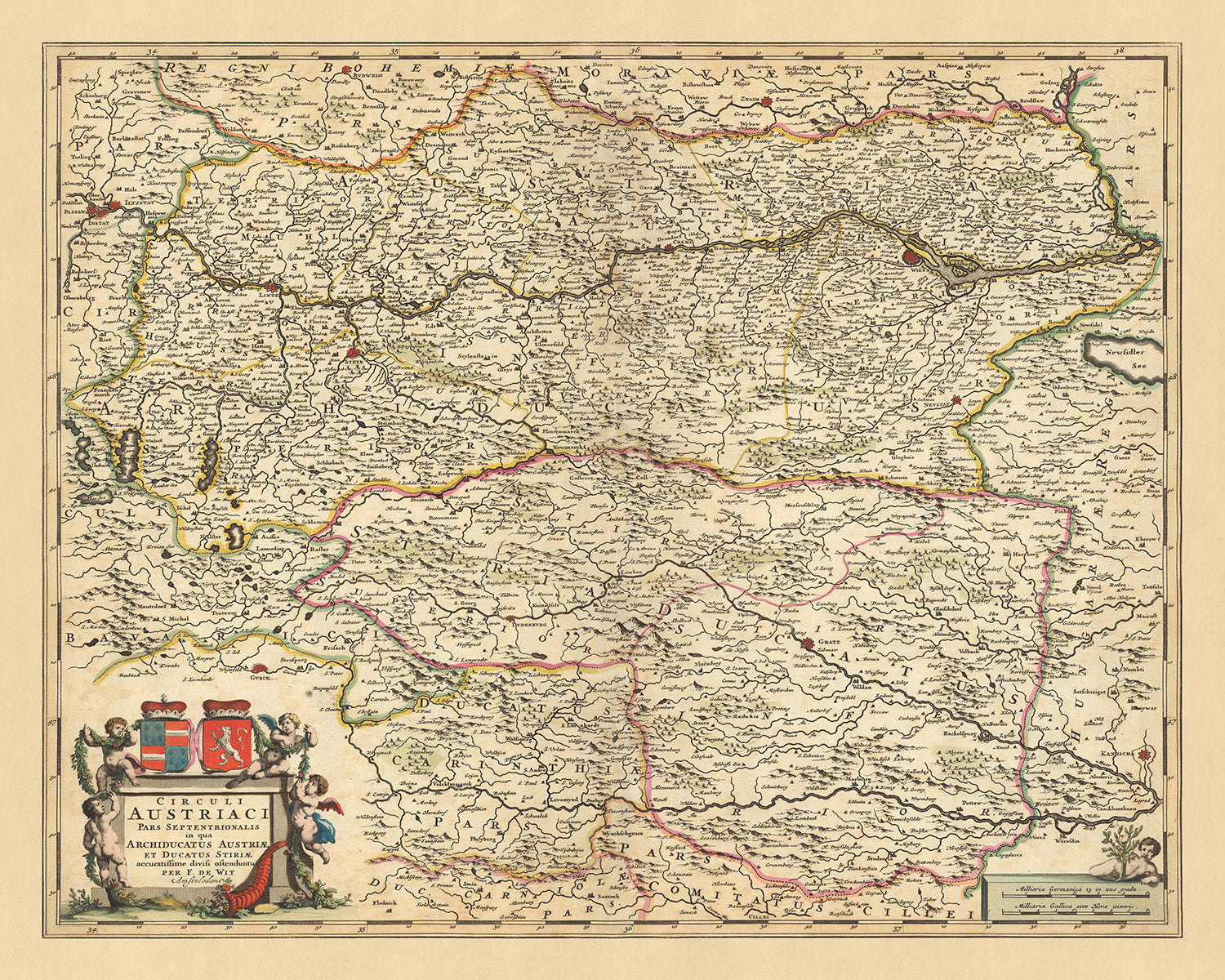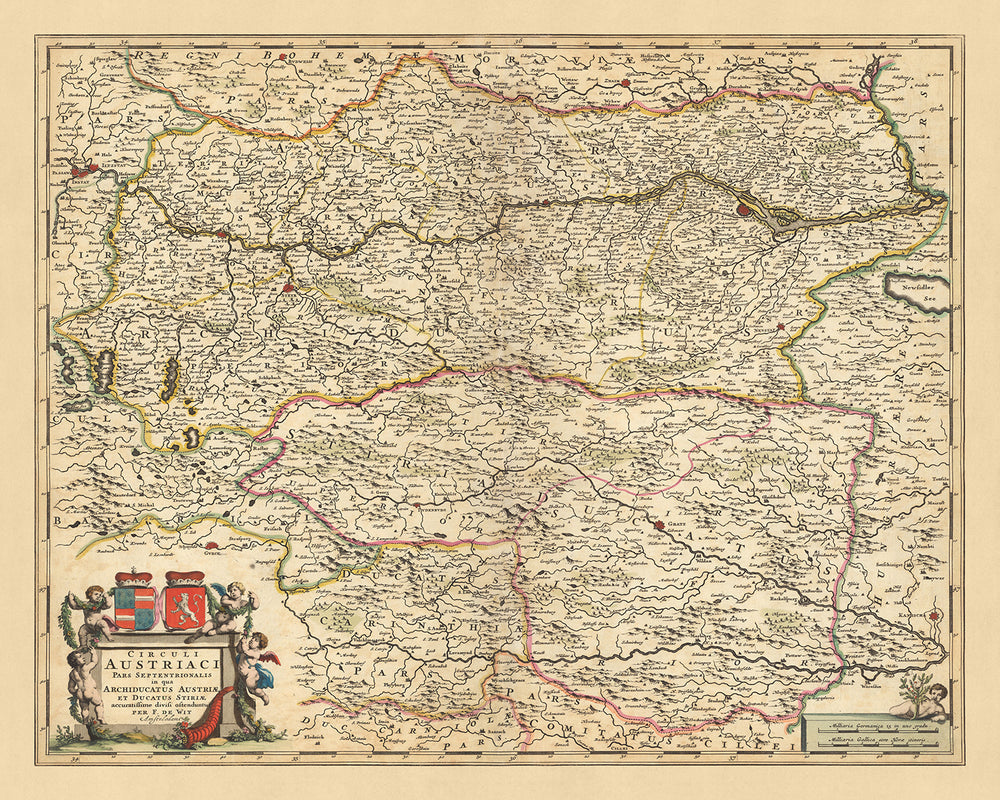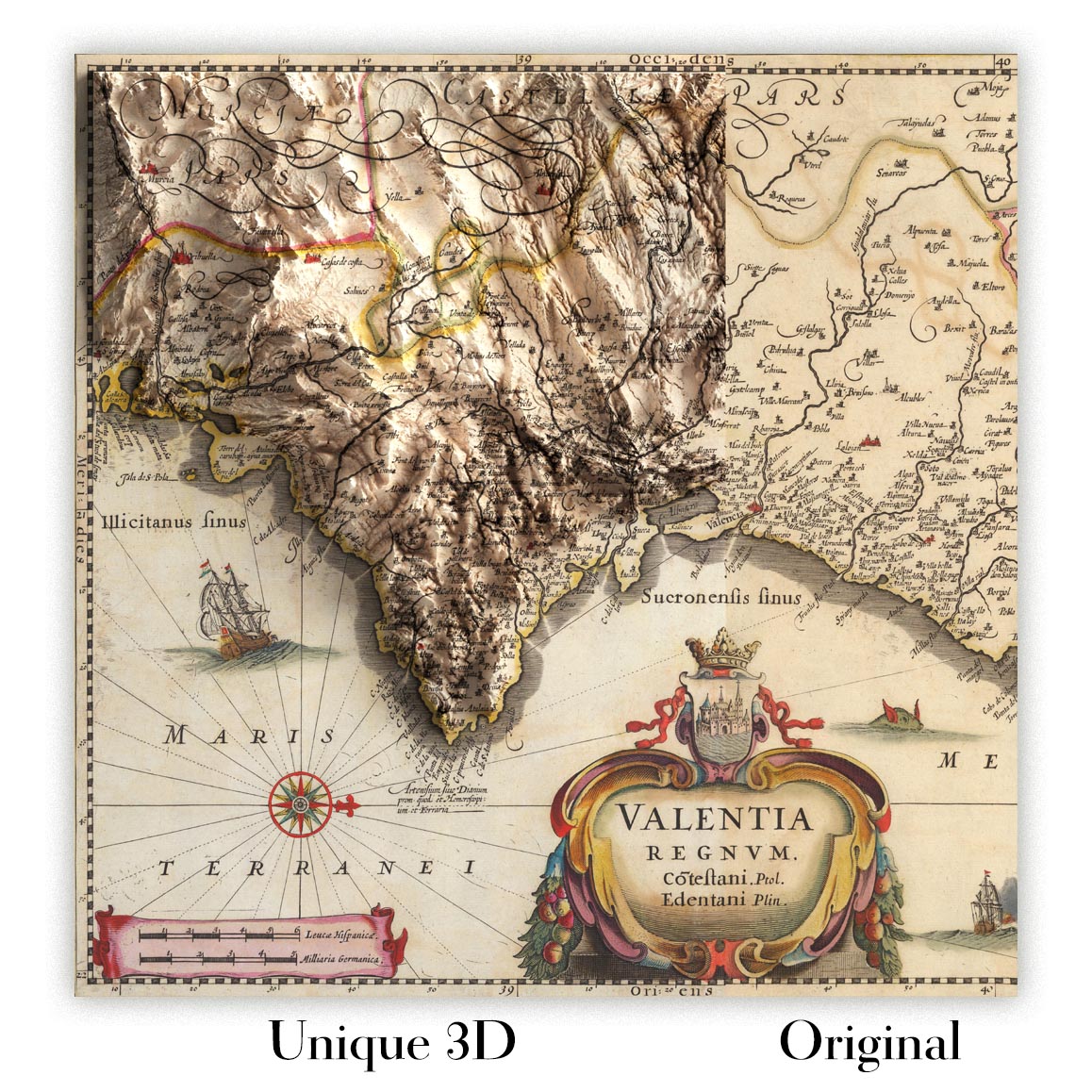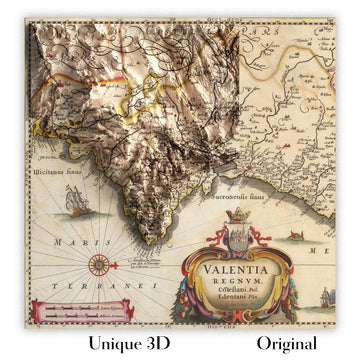- Handmade locally. No import duty or tax
- FREE Delivery by Christmas
- Love it or your money back (90 days)
- Questions? WhatsApp me any time
Own a piece of history
5,000+ 5 star reviews


Step back in time with this intricate and fascinating map, 'Circuli Austriaci pars septentrionalis in qua Archiducatus Austriae et Ducatus Stiriae accuratissime divisi ostenduntur', by renowned mapmaker Nicolaes Visscher II. Translated from Latin, the title means 'The Northern part of the Austrian Circle in which the Archduchy of Austria and the Duchy of Styria are shown divided most accurately'. This map, crafted in 1690, provides a detailed snapshot of the political and geographical landscape of the time.
The map prominently features the city of Vienna, then the heart of the Austrian Empire and a major European hub of politics, culture, and economics. Also highlighted is Graz, the capital of Styria, a city known for its beautiful baroque buildings and the ancient Schlossberg fortress. Linz, another Austrian city, is also featured, known for its rich history and the Danube River that courses through it.
Further south, the map showcases Maribor, a charming city nestled in the heart of Slovenia's wine region. Maribor was a significant part of the Duchy of Styria during the time this map was created. The Gesäuse National Park, although not yet established in 1690, is marked on the map. Today, it's known for its breathtaking mountainous landscapes and the roaring Enns River.
Nicolaes Visscher II, the map's creator, was part of a prominent family of Dutch cartographers, artists, and publishers. His works are known for their accuracy and artistic detail, reflecting the high standards of the Dutch Golden Age of cartography. This map is no exception, offering a unique blend of historical and geographical insight into the Northern Austrian Circle during a pivotal period in European history.
Some of the significant locations shown on this map:
Archduchy of Austria:
- Vienna: Known as Wien, it was the heart of the Austrian Empire and a major European hub of politics, culture, and economics.
- Linz: Known for its rich history and the Danube River that courses through it.
- Krems: An important city in Lower Austria, known for its historic architecture and wine production.
- Wiener Neustadt: Once a fortified city, it played a significant role in Austrian military history.
- St. Pölten: Known as the oldest city in Austria with a rich history dating back to Roman times.
- Baden: Famous for its hot springs and was a preferred summer residence of Austrian nobility.
- Eisenstadt: Known for the Esterházy Palace, a significant cultural landmark.
- Gmünd: A historic city known for its fortifications and rich cultural heritage.
- Korneuburg: Known for its medieval architecture and its role in Austrian trade.
- Tulln: Known as the birthplace of the famous painter Egon Schiele.
Duchy of Styria:
- Graz: The capital of Styria, known for its beautiful baroque buildings and the ancient Schlossberg fortress.
- Maribor: Located in modern-day Slovenia, it was a significant part of the Duchy of Styria.
- Leoben: An important mining city known for its rich deposits of iron ore.
- Bruck an der Mur: Known for its strategic location at the confluence of the Mur and Mürz rivers.
- Judenburg: An important trade city in the Middle Ages.
- Frohnleiten: Known for its beautiful historic city center.
- Mürzzuschlag: An important hub of the Austrian railway network.
- Knittelfeld: Known for its horse market in the Middle Ages.
- Voitsberg: Known for its coal mining industry.
- Bad Radkersburg: Known for its thermal springs and historic architecture.
Significant Natural Phenomena:
- Danube River: The second-longest river in Europe, flowing through Vienna and Linz.
- Mur River: A significant river in Styria, known for its picturesque landscapes.
- Gesäuse National Park: Although not yet established in 1690, it's known for its breathtaking mountainous landscapes and the roaring Enns River.
- Schneeberg Mountain: The highest mountain in Lower Austria, known for its panoramic views.
- Neusiedler See: The largest endorheic lake in Central Europe, located near Eisenstadt.
Notable Historical Events (1600-1690):
- Battle of Vienna (1683): A significant event in the Great Turkish War where the Habsburgs and their allies halted the advance of the Ottoman Empire into Europe.
- The Peace of Vasvár (1664): Ended the Austro-Turkish War, with Habsburg Austria making significant territorial concessions to the Ottoman Empire.
- The start of the reign of Leopold I (1657): Marked the beginning of an era of Habsburg consolidation and expansion in Central Europe.
Please double check the images to make sure that a specific town or place is shown on this map. You can also get in touch and ask us to check the map for you.
This map looks great at all sizes: 12x16in (30.5x41cm), 16x20in (40.5x51cm), 18x24in (45.5x61cm), 24x30in (61x76cm), 32x40in (81.5x102cm), 40x50in (102x127cm), 48x60in (122x153cm) and 56x70in (142x178cm), but it looks even better when printed large.
I can create beautiful, large prints of this map up to 90in (229cm). Please get in touch if you're looking for larger, customised or different framing options.
The model in the listing images is holding the 16x20in (40.5x51cm) version of this map.
The fifth listing image shows an example of my map personalisation service.
If you’re looking for something slightly different, check out my collection of the best old maps of Europe and European cities to see if something else catches your eye.
Please contact me to check if a certain location, landmark or feature is shown on this map.
This would make a wonderful birthday, Christmas, Father's Day, work leaving, anniversary or housewarming gift for someone from the areas covered by this map.
This map is available as a giclée print on acid free archival matte paper, or you can buy it framed. The frame is a nice, simple black frame that suits most aesthetics. Please get in touch if you'd like a different frame colour or material. My frames are glazed with super-clear museum-grade acrylic (perspex/acrylite), which is significantly less reflective than glass, safer, and will always arrive in perfect condition.
This map is also available as a float framed canvas, sometimes known as a shadow gap framed canvas or canvas floater. The map is printed on artist's cotton canvas and then stretched over a handmade box frame. We then "float" the canvas inside a wooden frame, which is available in a range of colours (black, dark brown, oak, antique gold and white). This is a wonderful way to present a map without glazing in front. See some examples of float framed canvas maps and explore the differences between my different finishes.
For something truly unique, this map is also available in "Unique 3D", our trademarked process that dramatically transforms the map so that it has a wonderful sense of depth. We combine the original map with detailed topography and elevation data, so that mountains and the terrain really "pop". For more info and examples of 3D maps, check my Unique 3D page.
For most orders, delivery time is about 3 working days. Personalised and customised products take longer, as I have to do the personalisation and send it to you for approval, which usually takes 1 or 2 days.
Please note that very large framed orders usually take longer to make and deliver.
If you need your order to arrive by a certain date, please contact me before you order so that we can find the best way of making sure you get your order in time.
I print and frame maps and artwork in 23 countries around the world. This means your order will be made locally, which cuts down on delivery time and ensures that it won't be damaged during delivery. You'll never pay customs or import duty, and we'll put less CO2 into the air.
All of my maps and art prints are well packaged and sent in a rugged tube if unframed, or surrounded by foam if framed.
I try to send out all orders within 1 or 2 days of receiving your order, though some products (like face masks, mugs and tote bags) can take longer to make.
If you select Express Delivery at checkout your order we will prioritise your order and send it out by 1-day courier (Fedex, DHL, UPS, Parcelforce).
Next Day delivery is also available in some countries (US, UK, Singapore, UAE) but please try to order early in the day so that we can get it sent out on time.
My standard frame is a gallery style black ash hardwood frame. It is simple and quite modern looking. My standard frame is around 20mm (0.8in) wide.
I use super-clear acrylic (perspex/acrylite) for the frame glass. It's lighter and safer than glass - and it looks better, as the reflectivity is lower.
Six standard frame colours are available for free (black, dark brown, dark grey, oak, white and antique gold). Custom framing and mounting/matting is available if you're looking for something else.
Most maps, art and illustrations are also available as a framed canvas. We use matte (not shiny) cotton canvas, stretch it over a sustainably sourced box wood frame, and then 'float' the piece within a wood frame. The end result is quite beautiful, and there's no glazing to get in the way.
All frames are provided "ready to hang", with either a string or brackets on the back. Very large frames will have heavy duty hanging plates and/or a mounting baton. If you have any questions, please get in touch.
See some examples of my framed maps and framed canvas maps.
Alternatively, I can also supply old maps and artwork on canvas, foam board, cotton rag and other materials.
If you want to frame your map or artwork yourself, please read my size guide first.
My maps are extremely high quality reproductions of original maps.
I source original, rare maps from libraries, auction houses and private collections around the world, restore them at my London workshop, and then use specialist giclée inks and printers to create beautiful maps that look even better than the original.
My maps are printed on acid-free archival matte (not glossy) paper that feels very high quality and almost like card. In technical terms the paper weight/thickness is 10mil/200gsm. It's perfect for framing.
I print with Epson ultrachrome giclée UV fade resistant pigment inks - some of the best inks you can find.
I can also make maps on canvas, cotton rag and other exotic materials.
Learn more about The Unique Maps Co.
Map personalisation
If you're looking for the perfect anniversary or housewarming gift, I can personalise your map to make it truly unique. For example, I can add a short message, or highlight an important location, or add your family's coat of arms.
The options are almost infinite. Please see my map personalisation page for some wonderful examples of what's possible.
To order a personalised map, select "personalise your map" before adding it to your basket.
Get in touch if you're looking for more complex customisations and personalisations.
Map ageing
I have been asked hundreds of times over the years by customers if they could buy a map that looks even older.
Well, now you can, by selecting Aged before you add a map to your basket.
All the product photos you see on this page show the map in its Original form. This is what the map looks like today.
If you select Aged, I will age your map by hand, using a special and unique process developed through years of studying old maps, talking to researchers to understand the chemistry of aging paper, and of course... lots of practice!
If you're unsure, stick to the Original colour of the map. If you want something a bit darker and older looking, go for Aged.
If you are not happy with your order for any reason, contact me and I'll get it fixed ASAP, free of charge. Please see my returns and refund policy for more information.
I am very confident you will like your restored map or art print. I have been doing this since 1984. I'm a 5-star Etsy seller. I have sold tens of thousands of maps and art prints and have over 5,000 real 5-star reviews. My work has been featured in interior design magazines, on the BBC, and on the walls of dozens of 5-star hotels.
I use a unique process to restore maps and artwork that is massively time consuming and labour intensive. Hunting down the original maps and illustrations can take months. I use state of the art and eye-wateringly expensive technology to scan and restore them. As a result, I guarantee my maps and art prints are a cut above the rest. I stand by my products and will always make sure you're 100% happy with what you receive.
Almost all of my maps and art prints look amazing at large sizes (200cm, 6.5ft+) and I can frame and deliver them to you as well, via special oversized courier. Contact me to discuss your specific needs.
Or try searching for something!















































